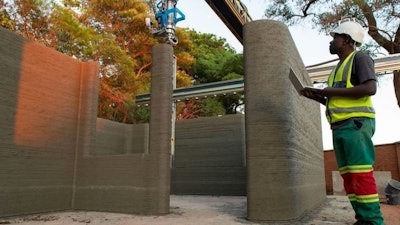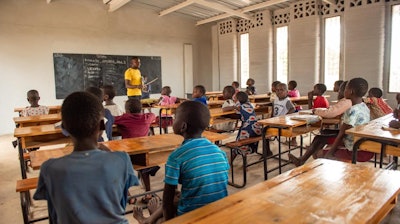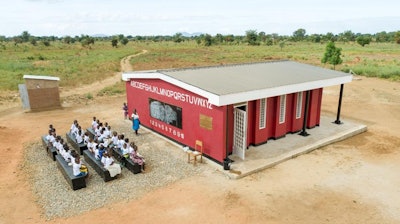
In a partnership between Holcim, CDC Group and 14Trees, the world's first 3D-printed school was constructed in 18 hours in Malawi, a country in southeastern Africa. Children began learning in their new school on June 21.
The school is proof that 3D printing can play a key role in bridging our world’s education infrastructure gap by building high-quality classrooms for children in a sustainable, affordable and fast-paced way at scale, says Miljan Gutovic, region head of Europe, Middle East and Africa at Holcim Group.
 In Malawi, UNICEF estimates a shortage of 36,000 classrooms, which would take 70 years to build using conventional methods. According to 14Trees, this infrastructure gap could be bridged in 10 years with 3D printing.Holcim
In Malawi, UNICEF estimates a shortage of 36,000 classrooms, which would take 70 years to build using conventional methods. According to 14Trees, this infrastructure gap could be bridged in 10 years with 3D printing.Holcim
“I am very proud of how our colleagues at 14Trees have deployed cutting-edge 3D printing technology to solve such an essential infrastructure need," Gutovic says. "Now that we’ve proven the concept in Malawi, we look forward to scaling up this technology across the broader region, with projects already in the pipeline in Kenya and Zimbabwe.”
Using proprietary Holcim ink, the 3D printing process reduces the time, cost and materials used for building housing and schools, while minimizing the environmental footprint by more than 50% compared to conventional methods. The 3D ink material used is a 3D printing mortar made of cement, sand and additives and the recipe is patented by Holcim. It reaches similar performance as concrete, according to a Holcim official.
 Holcim, CDC Group and 14Trees are working to create 3D printed schools in Malawi, where there is a shortage of school buildings.Holcim
Holcim, CDC Group and 14Trees are working to create 3D printed schools in Malawi, where there is a shortage of school buildings.Holcim
Last year, the company opened a new dry mortar plant in Zimbabwe that will produce the 3D printable ink required for local construction projects.
In Malawi, UNICEF estimates a shortage of 36,000 classrooms, which would take 70 years to build using conventional methods. According to 14Trees, this infrastructure gap could be bridged in 10 years with 3D printing.
These projects will also help created skilled jobs by hiring and upskilling local experts in roles such as 3D machine operators to material specialists working in partnership with local builders for carpentry, roofing, painting and more. In addition to the school in Salima district, 14Trees also built its first 3DP prototype house in Lilongwe, Malawi, in just 12 hours, compared to almost four days using conventional methods.
The CDC Group is a financial investor based in the United Kingdom and 14Trees is a nonprofit focused on creating affordable housing and buildings in Africa.



















